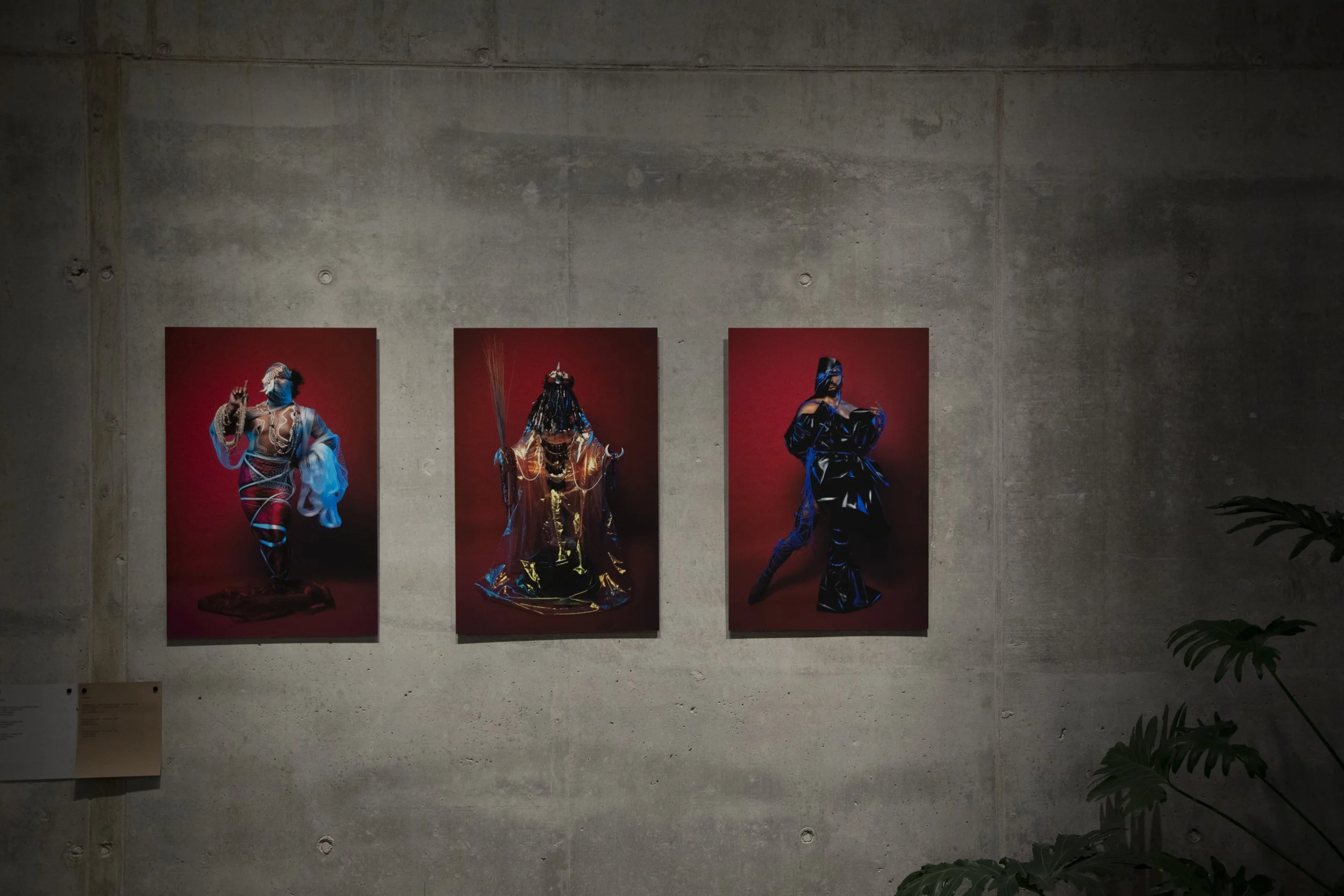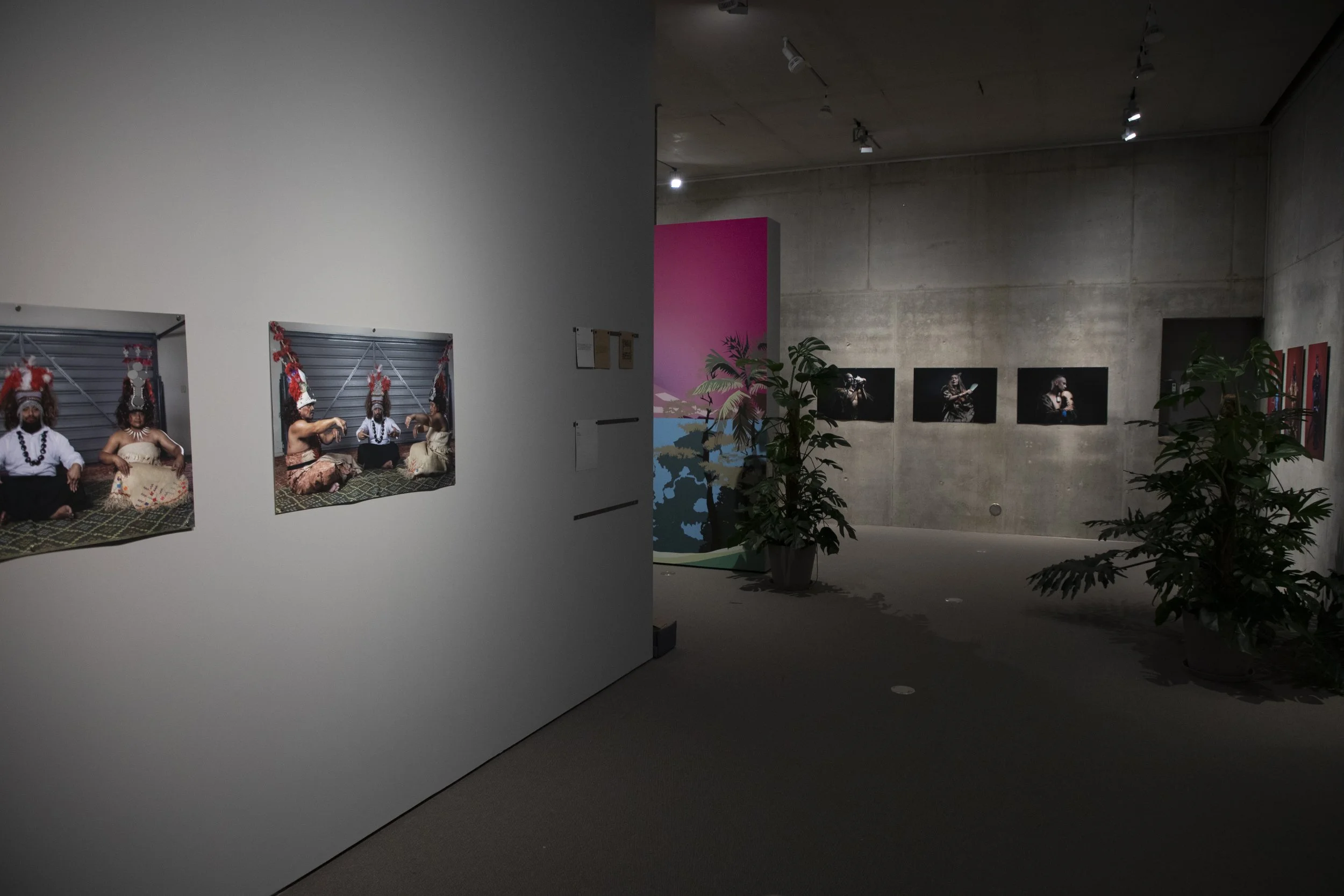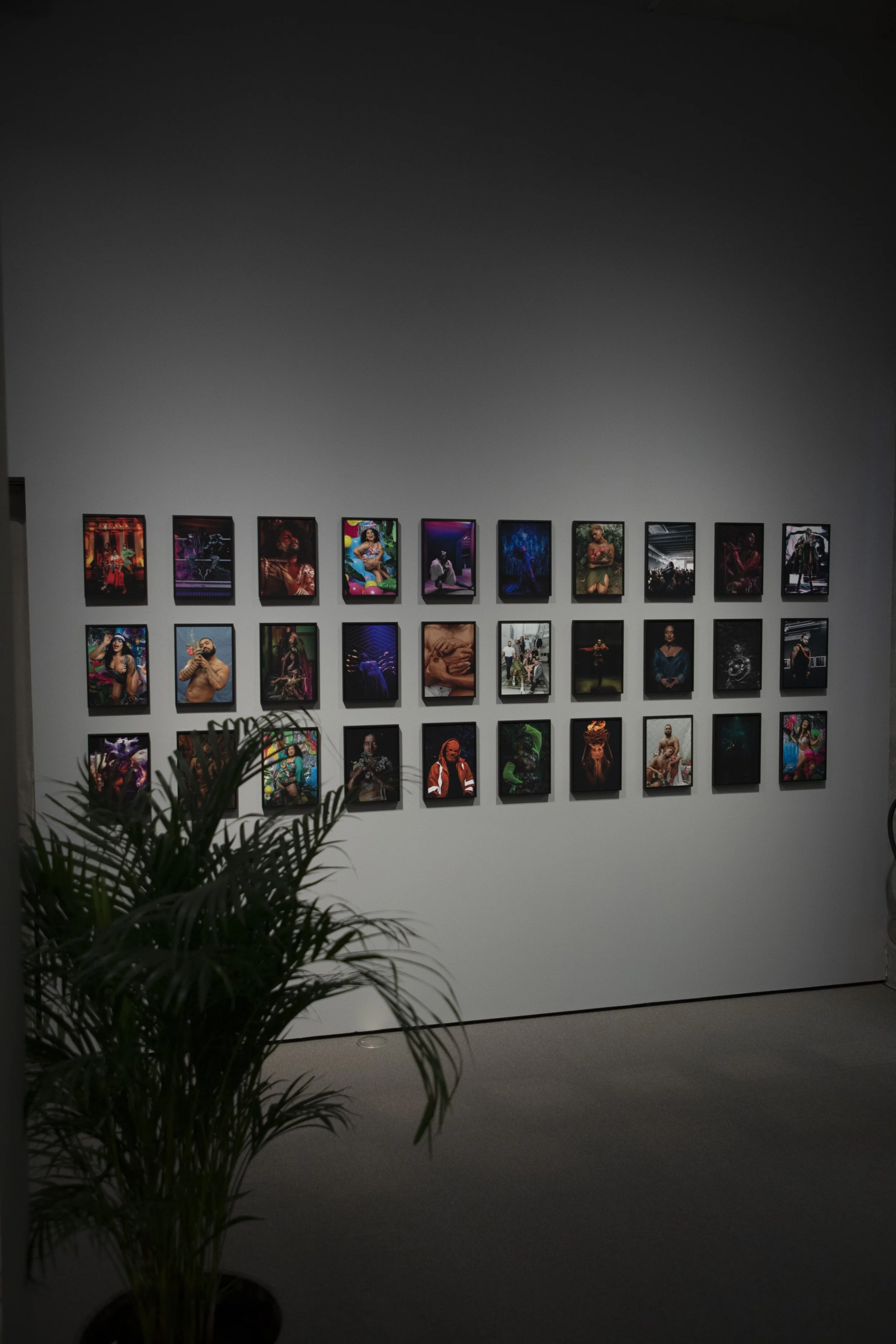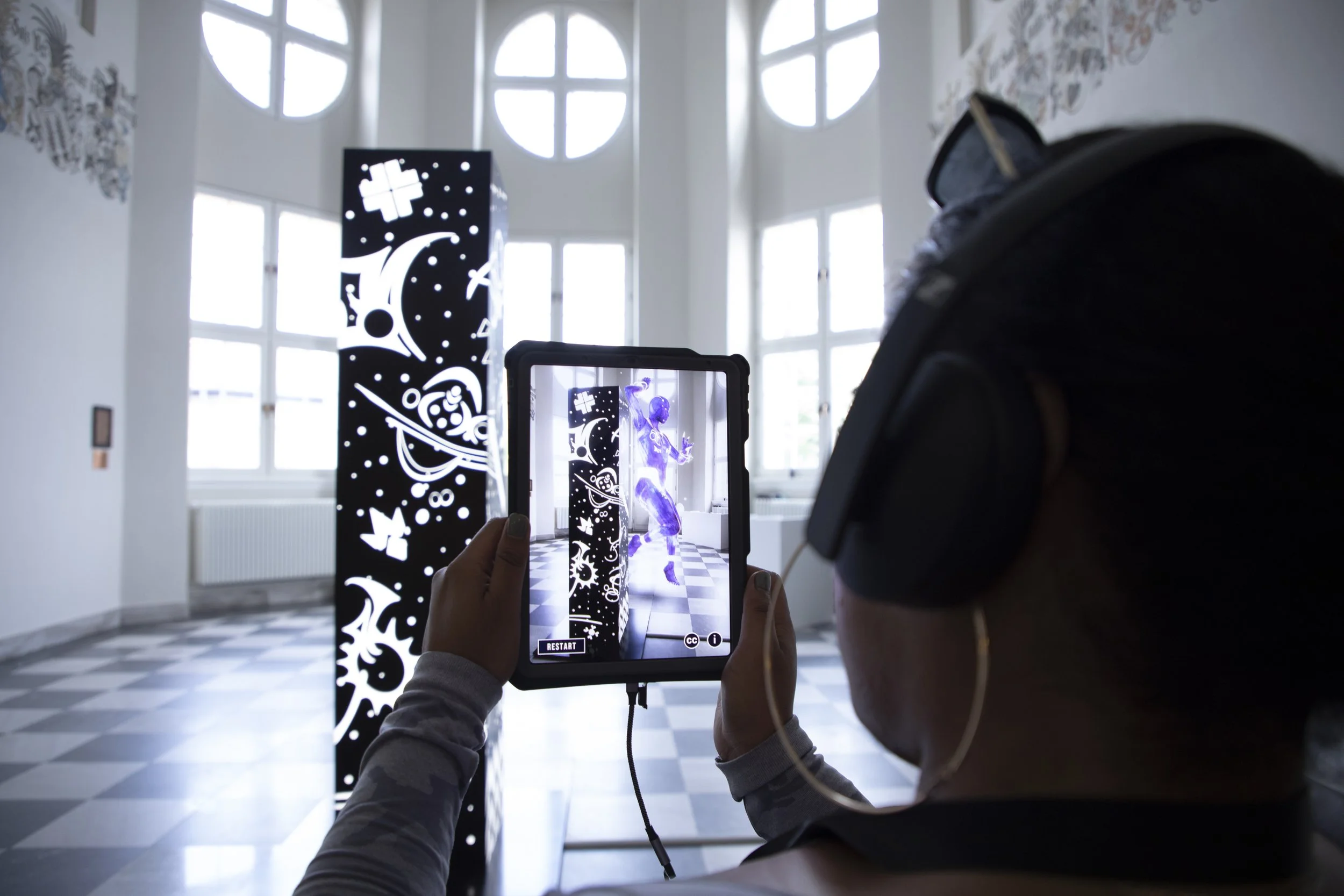FAFSWAG at Documenta 15 - Interview with Tapuaki Helu
For those that don’t know, can you please tell us about FAFSWAG.
FAFSWAG is collective of queer indigenous creatives based in Tamaki Makaurau Auckland. We operate across a multitude of interdisciplinary art forms and genres. At times working collaboratively to activate public and digital space, celebrating Queer Brown bodies, contemporary Pacific arts, and cultural restoration.
Established in 2013 FAFSWAG have worked across the arts sector in various capacities, from producing live performance, curating exhibitions, parties, and community gatherings through to film, digital arts and multimedia. Made up of artists of mixed Moana heritage, from Samoa, Tonga, Niue, The Cook Islands, and Aotearoa, our art has a focus on Identity and representation, shared space, shared stories and documenting our social history.
The collective has since exhibited and performed around the world, at the Centre Pompidou in Paris France, Moku Pacific HQ in London, Emergency Gallery in Vevey Switzerland, Rotterdam International Film Festival, ImagineNATIVE Toronto Canada, Asinabka Indigenous arts Festival in Ontario Canada, MGM Grand in Las Vegas, and in 2020 represented New Zealand at the 22nd Biennale of Sydney NIRIN. FAFSWAG was also awarded the 2020 interdisciplinary Arts Laureate award by the New Zealand Arts Foundation.
You were invited to show at the iconic Documenta 15 in Kassel Germany. Can you tell us about how that all happened?
We had just finished our exhibition for the Sydney Biennale NIRIN, entitled Codeswitch Re-Learn, Re-Imagine, Re-Create, developed over the first covid lockdown and presented in the middle of 2020. We spent a lot of time as a collective adjusting to this new covid environment, which meant our projects were mostly delivered online and remotely. Something we're still working on and still building capacity for.
It was a strange time for our team, like many other creatives in our sector, we were trying to redefine what our work is and what our collective practice will look like in an environment impacted by covid, closed international borders and ongoing lockdowns. It was at this time when the invitation came through, to meet the collective Ruangrupa, a collective from Indonesia appointed as the guest curators for Documenta 15. The whole team agreed to meet with them and we started a conversation, which to this day is still ongoing.
What did it mean to you to be invited to show? (personally and as a group)
To be one of the only groups of artists from Aotearoa invited to present in Kassel has been an honour, especially since the invitation came from guest curators Ruangrupa directly. We are always very cautious about being invited to major institutional exhibitions as our practice is sometimes tokenized and sometimes, we are booked as entertainment. The thirst for diversity within civic arts programming often means some public arts programming will include us as a means of ticking boxes.
But after meeting with the Indonesian Collective - Ruangrupa, it was clear to us their vision for a globally connected network of arts collectives from the global south, sharing resources and working collaboratively to distribute knowledge, histories, and stories, heavily aligned with many of the values of our own collective. So, agreeing to be part of this new and radical approach to art making has been very artistically and culturally enriching.
The theme for Documenta Fifteen is Lumbung. Lumbung is the Indonesian word for a collectively governed rice-barn, where the gathered harvest is stored for the common good of the community. Under this premise, art collectives from around the world were asked to join a Lumbung process in which there was a series of cultural exchanges facilitated over almost two years.
This has allowed the delivery of Documenta Fifteen to be artist driven and for the collective to establish harvesting of resources from their own arts ecosystems. In our case it has been about harvesting our stories as Moana artists living in the Pacific Diaspora here in Aotearoa New Zealand and presenting a sprawling snapshot of our arts practice, our communities, and our cultural experiences.
What did you show in your exhibition?
For the festival we presented three site specific works, spread across three main locations in the city of Kassel, presenting newly commissioned works in dialogue with legacy archival works from the collective and from our massive collection. The first is a moving image installation entitled ALTERATION, produced locally in Tamaki; this is considered a companion piece to the archival exhibition of the same name. The film is a collaboration between seven members of the collective, developed and created over the course of an entire year and was showcased on a custom built LED Screen on the building's facade at Hübner Areal.
Located at Hessisches LandesMuseum, the second work is an augmented reality (AR) sculpture entitled ATUA. Derived from pan-Pacific deity figures that occupy the underworld, this work is presented as a pou whenua (land marking) and enabled through handheld IOS devices such as an iPhone and iPad. The combined technology generates digital rendering of Te Kore, as an embodied celestial being. Created by Tanu Gago and Mahia Dean, and produced by Piki Films, with design by WRESTLER and support from the New Zealand Film Commission, ATUA had its world premiere at the 2022 Sundance Film Festival in January earlier in the year.
The third body of work is expressed in the form of an archival exhibition, comprising of large mixed-media works, prints, photography, moving image and interactive works. When walking into this space, I got a reflection of just how much art the collective has created in our almost ten-year history, recognising this work was only a small portion of the archive dating from 2013 to present day.
What were your first impressions of Kassel?
Dark haha, it was night time by the time we had arrived at Kassel after our initial arrival into Frankfurt airport. So by the time we arrived at our accommodation in Kassel, most of us were in and out of sleep from the long haul. It’s Summer in Kassel at the moment, so going over when New Zealand was moving into winter was a plus. Once we got a bit of rest and passed the language barrier to arriving into the city, the first thing that I noticed was the architecture. It’s definitely what you see in movies. Big, spacious and reminiscent of a city with lots of history, a city that has survived the second world war, and it shows in the buildings.
Even though Documenta as a festival brings in a lot of foriegn tourism from global audiences when it’s staged every five years, it still felt like Kassel may not have been prepared for the significant influx of foreigners into the city. Locally there are hints of insulated communities of colour, but they were very small, it was mostly a Palangi city if I’m being honest. And you felt it as Pacific people. I mean, as a group of people we stand out in most crowds, but in Kassel we really stood out from the locals. I guess that’s simply part of experiencing a major international cultural arts festival.
What was Documenta like? (as a visitor / as an exhibitor)
For Documenta-15 as a visitor and exhibitor for myself merged a little. I had my exploration cap on and what Documenta-15 offered with the curatorial lead by Ruangrupa, was an exploration of the city and the different exhibition sites but most promisingly was having the opportunity to visit exhibitions by other indigineuous and creative collectives from around the world.
What was important to you to express through your exhibition?
As artists we’ve made a deliberate effort to document our social history. We’re part of a generation of Pacific people growing up without access to our own history as queer people from the Moana, living on stolen land and displaced from our motherlands as Pacific Imigrants to New Zealand.
This is just one of the side effects of colonisation and the ongoing impact of religion within the Pacific. A reality our arts collective is used to by now. It was important to all of us to show the diversity of our culture and present a history within Europe that people might not be familiar with. I think the work we presented achieved this for us and allowed us to share our journey with reclaiming our culture and carving out space within society.
What impression did you want to convey as FAFSWAG?
Our message for this particular project really aligned with the curatorial vision set by Ruangrupa. That together we have the power to shift our narrative and to change the way we experience culture and make and share art. To find common ground within ecosystems outside of our own and to really examine what it means to share resources and build meaningful relationships with people outside of our own context.
We went to Germany to share our story and remain open minded to the potential of learning and the growth we can experience from receiving and sharing in other people’s stories. We also wanted to challenge ourselves as a collective to present work that felt innovative, current and relevant for other cultures. The archive show for us is especially important as people creating our own material culture and redefining Pacific, Oceanic, Moana aesthetics and visual languages.
What did a day look like for you?
A typical day for me in Kassel, looked like waking up early to close the curtains cause the sun rose around 3-4am and didn't set till around 10pm, so the days were very long and hot. I was hoping to sleep in but unfortunately, not much of that was happening for myself. Once I’m up, breakfast was provided by the accommodation we were in, which was great, then off to figure out how to get into the city of Kassel. Taxi was the easiest. I know I sound like a total tourist lol.
For the team we had a tight itinerary of meetings with curators and festival directors who were in town for the press preview, making it easier for us to meet in person. We also had interviews with local and international media and would have to get through those before heading out to our various venues. The first few days consisted of getting acclimatised, checking our installationss and meeting many of the production folk from Documenta, as well as the other arts collectives before the official Launch of the Festival, which is why we were there.
What did you get out of the experience personally and professionally?
From the experience I got to explore a different hemisphere, to compare but also appreciate the contrast of where I come from. To be able to walk around and engage with art physically, spatially and mentally from around the world was a highlight for me. Also in saying that, to see our (Fafswag) works again just adds to the passion you have for the people whom you created works with, the memories of time, it sparks up that creative flare.
What was it like meeting other artists and collectives?
From the few artists and collectives I had managed to interact with, it was great. Got to meet great people, ones we’ve engaged with virtually and to finally meet in person, others that invited us into their space and created new connections and hoping to build on those relationships.
What was the biggest surprise that you had?
The food… I had a list of things to try, which in the end I couldn’t tick off my list, but food was the one that was surprising. It took some getting used to.
What did you think of the food?
The food was interesting. Everything looked the same and very appealing but the taste was different. This was a reminder that I was in a different country.




